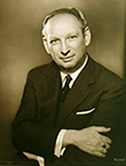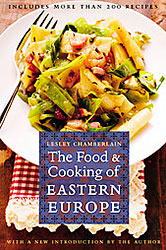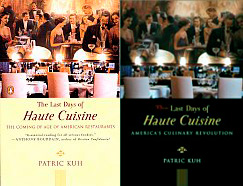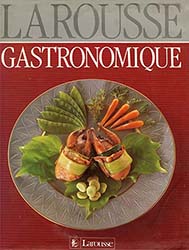 |
|
About Joseph Wechsberg and his life.
We will make pdfs available if we have them. Please be patient when downloading.
Mac users, control-click, then “Save Link As”; PC users, right-click then “Save As”.
 A Good Appetite: For Stellar Schnitzel, the Trick is in the Air, by Melissa Clark in the
A Good Appetite: For Stellar Schnitzel, the Trick is in the Air, by Melissa Clark in the  The Glamorous Life of the Theatre blog about theatre, life, and living in New York City, compliments Joseph and his articles, and mentions our site, in this post: The Early 1950s, October 2009,
The Glamorous Life of the Theatre blog about theatre, life, and living in New York City, compliments Joseph and his articles, and mentions our site, in this post: The Early 1950s, October 2009, Das neue Jahr beginnt mit einem Ärgernis, oder genauer gesagt, mit der Fortsetzung eines Ärgernisses, das ich jetzt erst entdeckt habe. Ach was, Ärgernis, es ist ein Skandal, es ist die mögliche Ursache aller Küchenkatastrophen, DER Grund, warum unsere Küchen-Pisa-Quote in den Keller schnellt: Eins der schönsten Bücher über das gute Essen und Trinken ist vergriffen und hierzulande nur noch antiquarisch aufzutreiben: Joseph Wechsbergs Meisterwerk Forelle blau und schwarze Trüffeln.
Ich weiß nicht mehr, wie ich vor ca. dreißig Jahren auf dieses Buch gekommen bin, ich glaube, Wolfram Siebeck hatte es in einer Kolumne oder einem Kochbuch empfohlen, jedenfalls hatte ich es auf meinen Wunschzettel gesetzt, und meine liebe Mutter - die also auch für diesen wesentlichen Teil meiner kulinarischen ausbildung verantwortlich zeichnet - hatte es mir auf den Gabentisch gelegt, ein kleines, gebundenes Buch mit blauem Schutzumschlag und einem schon damals etwas altbacken wirkenden Linolschnitt auf dem Umschlag. Daneben lagen - natürlich - noch weitere Bücher mit durchaus verlockenderer Optik, vielleicht war sogar ein neuer Le Carré dabei, trotzdem griff ich zuerst zum Wechsberg, schließlich hatte Siebeck ihn ja empfohlen. Ich schlug also das kleine Buch auf, blätterte ein wenig, irgendwo hakte mein Leserhirn ein und ab ging die Lucie. In einem Rutsch hab ich das Buch durchgelesen und fortan hat es mich nicht mehr losgelassen.
Was kein Kunststück ist, denn wer diesen Wanderungen eines Epikureers, wie der Untertitel heißt, einmal gefolgt ist, der schlägt den gleichen Weg immer wieder ein. Wechsbergs rastlose kulinarische Neugier, sein lebenslanges Unterwegssein zur nächsten guten Mahlzeit… dieser way of life ist überzeugend, ansteckend, faszinierend, daher bleibt es nicht aus, das man dieses Buch wieder und wieder zur Hand nimmt.
Auf dem eigenen kulinarischen Weg folgen einem die Geschichten, die Wechsberg erzählt. Vom Restaurant Gundel in Budapest. Von den unvergleichlichen Rindfleischgerichten im Meissl & Schaden in Wien. Von Ferdinand Point und seiner Pyramide…
Dieses Schlusskapitel über Point allein sichert Wechsberg einen Ehrenplatz im Olymp der Gastrosophie. Die Mischung aus Humor und Ehrfurcht, aus Nähe und Distanz, mit der er den genialen Perfektionisten und Kauz Ferdinand Point, den Erfinder der modernen Spitzengastronomie, portraitiert, macht diesen Text zu einem, Quatsch, zu DEM Höhepunkt der Fress-Literatur schlechthin. Ein liebevolleres, genialeres, besesseneres, appetitanregenderes Portrait eines großen Kochs und Restaurateurs ist noch nicht geschrieben worden. Wer das Point-Kapitel liest und nicht sofort davon träumt, an der Tafel des Meisters Platz nehmen zu dürfen, dem ist zumindest kulinarisch nicht zu helfen.
Und dieses Buch, das mir - und tausenden anderen Menschen - die Welt der guten und der großen Küche vorstellte, nahe brachte und letztlich öffnete, soll es jetzt nur noch als diffizil via Antiquariat zu erringende Jagdbeute geben? Nichts gegen unsere Antiquariate, aber Wechsbergs Meisterwerk gehört in die Buchhandlungen dieses Landes und nicht in die Obskurität der Amazon-Zweit- und Drittanbieter. Forelle blau und Schwarze Trüffeln gehört wieder ins Sortiment!
 Letter from then Town&Country Editor-in-Chief Pamelo Fiori about Joseph’s Burgundy article from November 1954.
Letter from then Town&Country Editor-in-Chief Pamelo Fiori about Joseph’s Burgundy article from November 1954. The Food and Cooking of Eastern Europe (at Table) by Lesley Chamberlain; Bison Books; 1st edition, 2006; paperback.
The Food and Cooking of Eastern Europe (at Table) by Lesley Chamberlain; Bison Books; 1st edition, 2006; paperback.Excerpt on page 131: “… made spicy with hot paprika, finished with sour cream. The food writer Joseph Wechsberg, born in Moravia at the turn of the century, …”
The Food and Cooking of Eastern Europe, first published in 1989 and a companion volume to Lesley Chamberlain’s acclaimed The Food and Cooking of Russia, surveys the rich and diverse food cultures that were known to few people in the West during the half century when Europe was divided. It contains more than two hundred recipes interwoven with historical background and notes from the author’s extensive experiences traveling through Central and Eastern Europe. When originally published this practical cookbook revealed how the world’s most delicious sausages, goulash and sauerkraut, fruit dumplings, cheesecake, and many other dishes tasted in their homelands. Now, in a quite different political world, this book is a vital resource for remembering life before the Iron Curtain was lifted. This Bison Books edition contains period illustrations and a new introduction by the author that describes how dramatically this region and its food have changed since the end of Central and Eastern Europe’s isolation in 1989.
 Mesto v Nas, Pribehy ostravskych Zidu: Montanex 2004.
Mesto v Nas, Pribehy ostravskych Zidu: Montanex 2004.Click here to download the page dedicated to J.W. Click on the book cover to enlarge it.
 The Last Days of Haute Cuisine: The Coming of Age of American Restaurants by Patric Kuh; Penguin; February 26, 2002; paperback.
The Last Days of Haute Cuisine: The Coming of Age of American Restaurants by Patric Kuh; Penguin; February 26, 2002; paperback.Excerpt on page 37: “… Entitled The Ambassador in the Sanctuary, it was written by Joseph Wechsberg and appeared first as a profile in the New Yorker and eventually became the book Dining at the Pavillon …”
Snooty waiters, seating by social pedigree, and food copied from the classical French canon–these facts of restaurant life are mostly gone from our modern dining scene. But how did this status-based system, typical of the postwar period, mutate into today’s uniquely American fine-dining “experience”–a populist stew of New Californian, ethnic, and domesticated French and Italian cooking? Patric Kuh’s The Last Days of Haute Cuisine: America's Culinary Revolution tells all, deftly and with wit. “European gastronomy was about the few,” says Kuh, “the American market about the many. When they came together they created a whole new form: the modern American.”
The story begins in 1939 with the arrival in New York of Henri Soulé, maître restaurateur of the city’s very luxe Le Pavillon. It proceeds to explore such dining milestones as the counterculture-spawned Chez Panisse, Spago and other grilled-pizza lodestars, Sirio Maccione’s post-elitist Le Cirque, and Danny Meyer’s high-end yet democratized Union Square Cafe. It also tells of food deities like Julia Child, M.F.K. Fisher, James Beard, and Alice Waters–and the cookbook writers, celebrity chefs, and restaurateurs (roles sometimes embodied in a single person) who help craft our modern culinary world. A chef himself, Kuh also presents (sometimes gratuitously) personal anecdotes about the back-of-the-house restaurant cosmos. The Last Days of Haute Cuisine will delight readers with even a passing interest in the American food scene; they will learn much about the restaurant business, its life and lore, and, finally, the way we eat today.
 Obituary in the Austrian newspaper, Die Presse, 4 April 1983, click for a larger image.
Obituary in the Austrian newspaper, Die Presse, 4 April 1983, click for a larger image.

On page 133, writing about the 60s, Anne Mendelson says “And while Joseph Wechsberg began writing frequent, marvelously urbane reminiscences and surverys of anything from resourceful hotel concierges to the lore of bouillabaisse, the magazine’s chief workhorses would be the writers assigned to travel beats. Their golden age was just dawning.”
On page 138 the editors decided that the piece written by Joseph Wechsberg in the October 1967 issue, deserved to have a headline of the title of that piece The Last Waltz as the beginning of a pictorial of the famous pastry shop named Demel’s. The editors also acknowledged an excerpt from The Waltz which states, “At Demel’s, the pastry is nearly perfect, the waitresses are abbesses, and a count would never be mistaken for a duke.”
The editors also state that at Demel’s, “the people who work at Demel’s, which opened in 1786, consider it the only place on earth. And why not? The pastry chefs have recipes for over 100 kinds of Torten; the five-layer Esterhazytorte, and that is just the beginning.”
 The Great Good Place: Cafes, Coffee Shops, Community Centers, Beauty Parlors, General Stores, Bars, Hangouts, and How They Get You Through the Day by Ray Oldenburg; Da Capo Press: 3rd edition, 1999; hardback; Marlowe & Co: 1997; paperback.
The Great Good Place: Cafes, Coffee Shops, Community Centers, Beauty Parlors, General Stores, Bars, Hangouts, and How They Get You Through the Day by Ray Oldenburg; Da Capo Press: 3rd edition, 1999; hardback; Marlowe & Co: 1997; paperback.The Great Good Place argues that ‘third places’ – where people can gather, put aside the concerns of work and home, and hang out simply for the pleasures of good company and lively conversation – are the heart of a community’s social vitality and the grassroots of democracy.
 Larousse Gastronomique: Librairie Larousse, 1984.
Larousse Gastronomique: Librairie Larousse, 1984.
© 2008-17 – Poppy Wechsberg/www.josephwechsberg.com – All rights reserved.